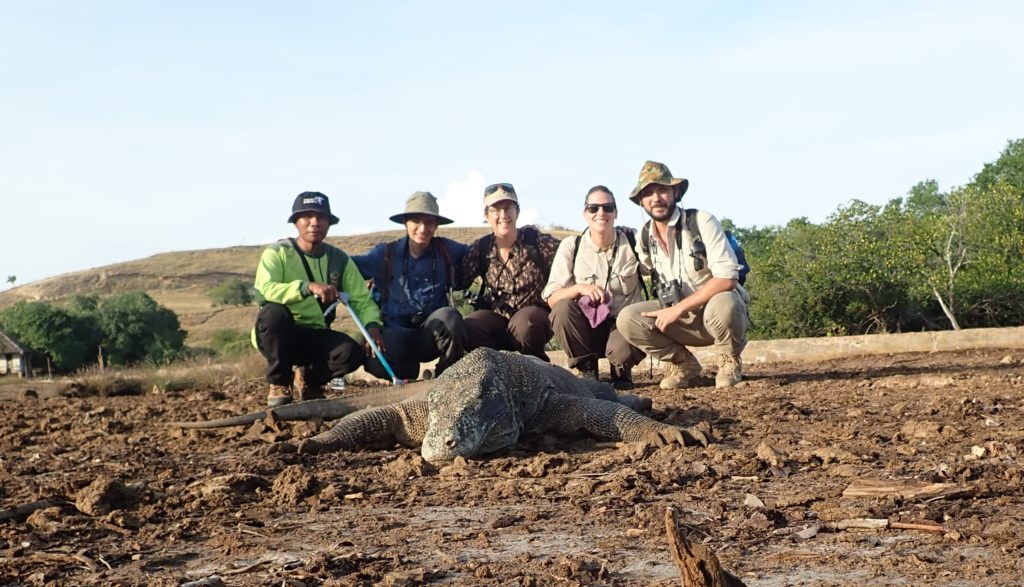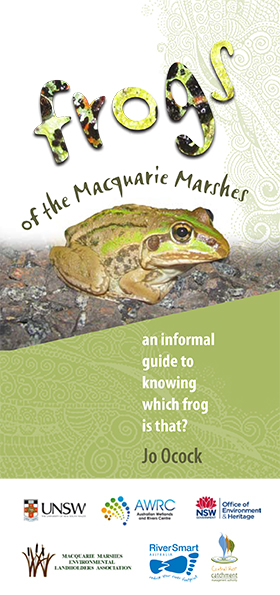I visited the Komodo National Park last year (April 2018), cruising the islands on a six-day boat trip with some very good friends. Our main purpose was to find as many skinks, geckos, snakes, lizards, and frogs that these islands could offer up (all things herpetological). Plus, all the birds, bugs, slugs and ocean-dwelling creatures that we might see while doing so. It was, simply, the best.
So many things could be said about Komodo NP and the infamous Komodo dragons, or the other animals that we saw, the snorkelling we did, even the food we ate, that since returning from that holiday I didn’t know where to start, so I just avoided saying or writing anything. Plus, I didn’t think any of my photos were that great. But I’ve just had a reminisce through the pictures I took and many of them made me smile with the memory or the story behind it. So, I decided that is what I want to share…here are three of my favourite photos from my trip to Komodo NP not because they are the best photos, but because they have the best moments attached to them.
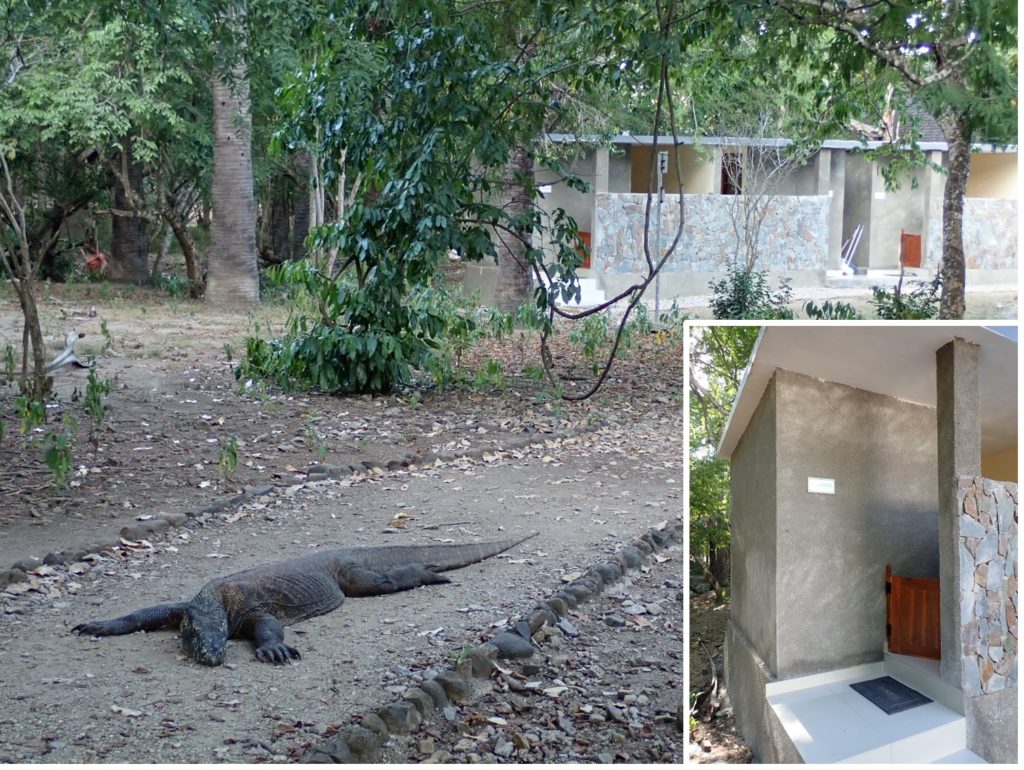
This photo is from when I realised that the visitor toilet facilities on Komodo Island have something similar to a child-barrier-gate to stop the dragons getting in. Like this but less fancy. It’s those low dark brown doors on the concrete building, see the inset. Because you wouldn’t want to go in and find a dragon backed into a corner annoyed that you’re blocking the exit. And you also don’t want to be in there enjoying the facilities and have one come in after you, because then you are staying in there until the dragon decide it’s time to leave, and that could be the next day! And as our guide explained, that has happened…!
A very elegant solution to a problem I hadn’t thought existed, using child-sized barrier doors to stop dragons disturbing tourists on the toilet, marvellous.
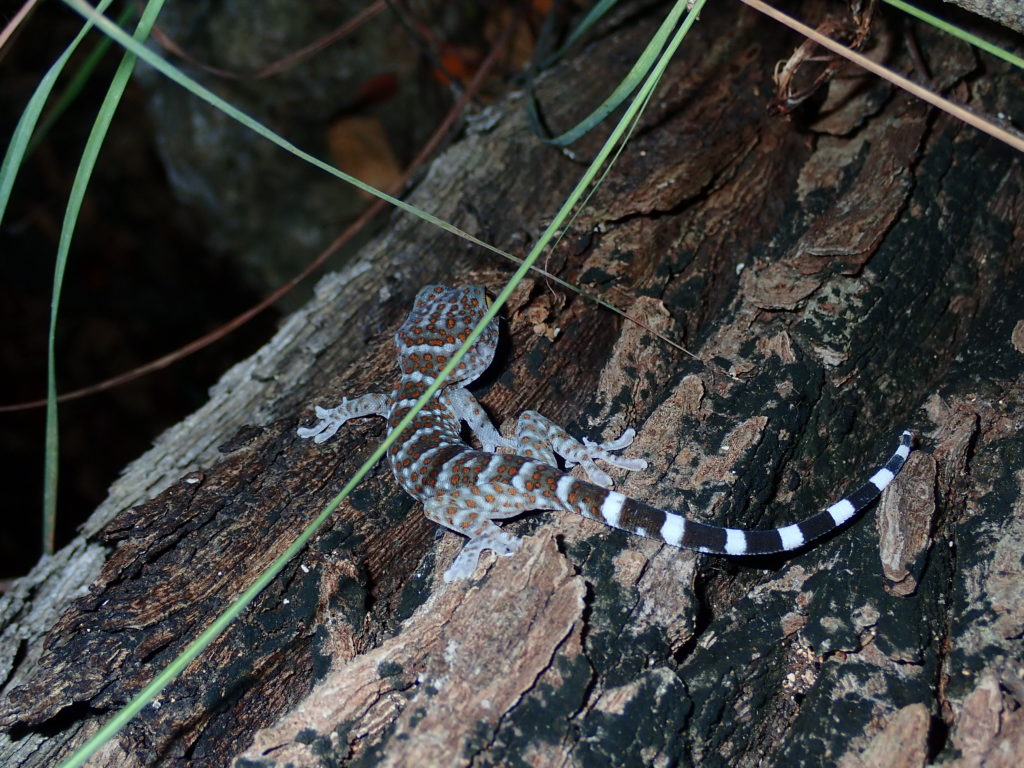
This is from our third night, and I remembered it being very relaxed as we spread out to search through the open grassy woodland in the dark, coming together when someone’s excited voice indicated they had found something.
I have good frog-spotting eyes, but it turns out they are less good at finding skinks and lizards at night compared to my pro-friends. So I was particularly thrilled when I found this cutey before anyone else did. It’s a tokay gecko (Gecko gecko), and a small one at that, about 15 cm nose to tip, so probably a recent hatchling or juvenile. It wasn’t the first tokay we’d seen on our trip or the first that night. But it was the first I’d seen first, and I had spotted a baby one, and baby anything is just much cuter and more special. So I snapped a few photos first (this was the best one!), before calling the others over. Tokays are the boss. They have spectacular blue and orange colours, a very distinctive call that echoes through the forest or around your cabin, and they grow to be one of the largest geckos in the world getting up to over 30 cm long. Boss.
Tokay reading: trade in wild tokay geckos
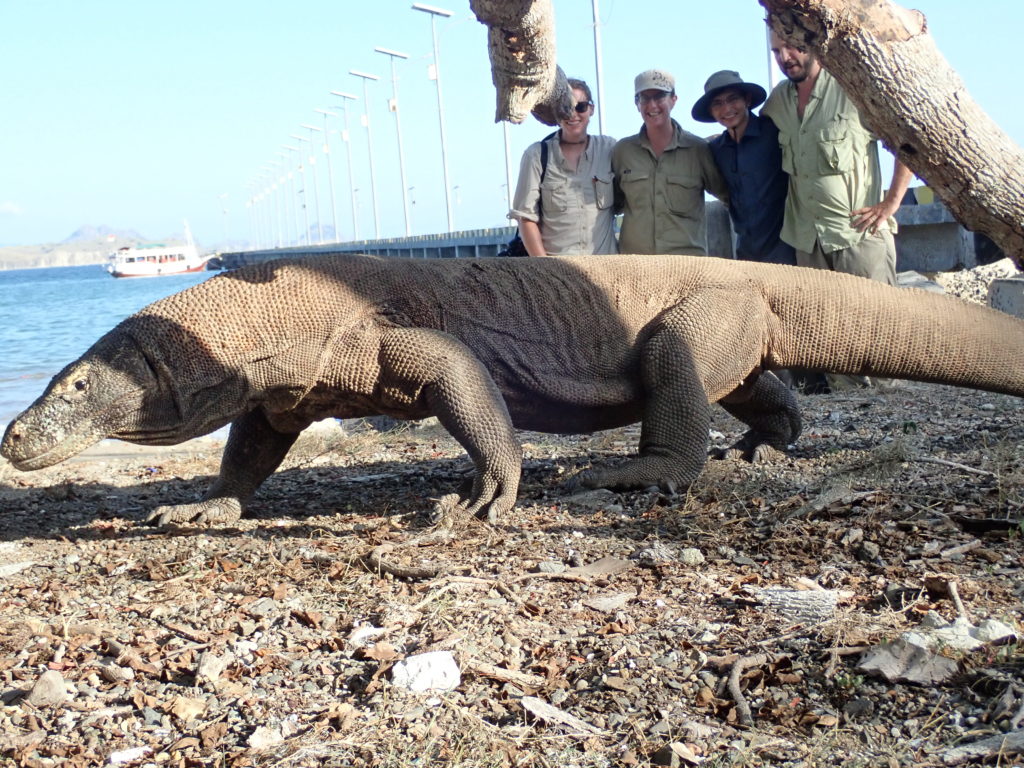
It’s actually quite easy to get a photo with you and a komodo dragon. Which seems ridiculous, as they are a mildly venomous, extra-large dragon that can actually run quite fast. However, the ones in the most visited area of the National Park seem quite used to people being around, so nearly everyone who goes to the island ends up with a group photo that includes a komodo dragon. It’s just about finding one looking very ‘dragon-y’ (generally lying down), then standing a few metres behind it, while your guide snaps off your iconic Komodo Island new profile photo. While I have a couple of those, I like this one the best. After getting the classic shot, the dragon decided it wasn’t keen for more modelling and started to lumber away, but we kept moving with it and our guide kept snapping away and we got this great action shot!
Also I have the best friends and I love how happy we look.
Komodo science: where the dragons came from
Huge thanks to our guide Ajis and his crew. Tourism in busy places can be a fraught affair, so do your homework and make sure you tourism responsibly by supporting local and sustainable.
